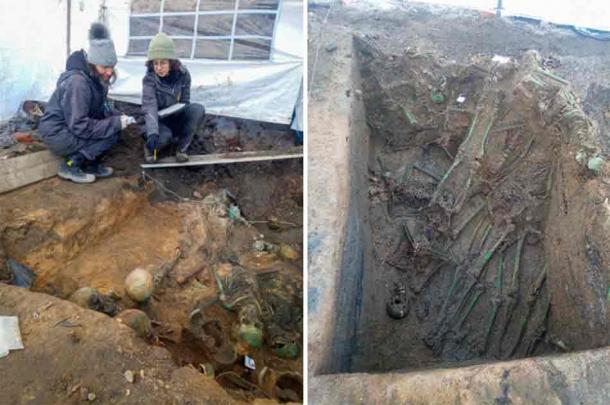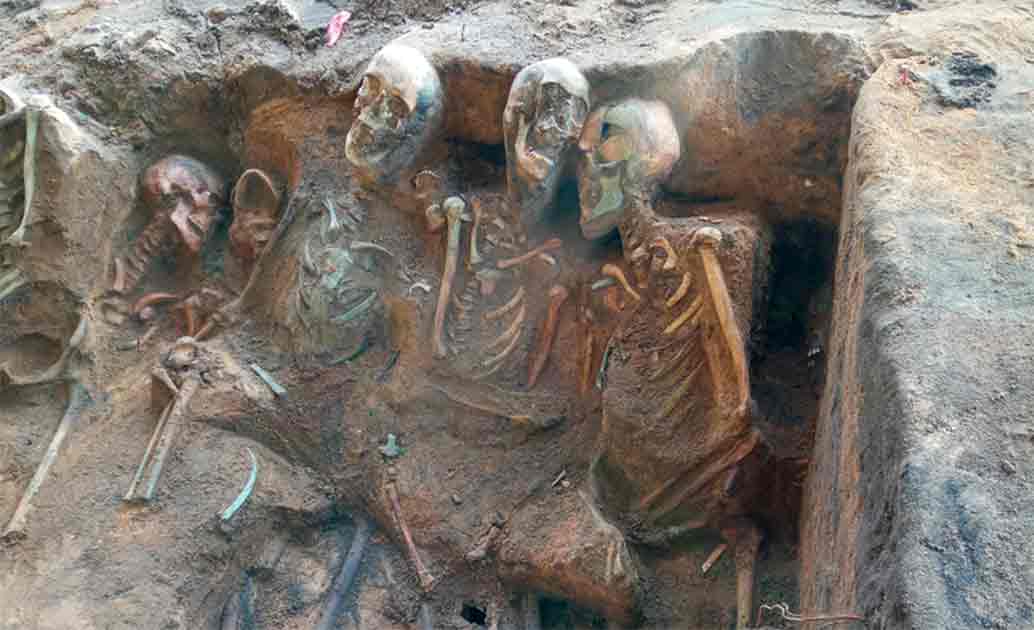Largest Mass Grave in Europe Discovered in Nuremberg, Germany
An unexpected discovery in the heart of Nuremberg has cast new light on the city’s traumatic history. Archaeologists, initially set to inspect an area for new apartment construction in the Franconian region of Bavaria, Germany, have stumbled upon what could be the largest mass grave ever excavated in Europe. Over a thousand skeletons, victims of the Black Death, have been unearthed, offering a unique insight into a period of great turmoil and transformation.
A Surprise Beneath the Surface
The discovery, which far surpassed initial expectations of finding remnants from the Thirty Years' War, revealed eight mass graves linked to two separate Black Death events. So far, three have been fully explored, with the bones' exhibiting some unusual green tint— a result of centuries-long metal oxide exposure (including copper) —adding a haunting aspect to the find.
The graves, differentiated into two groups by their stratigraphic layers, indicate varying burial times before and after the construction of the city's 1634 AD fortifications, explains a press release by In Terra Veritas, the archaeological service investigating the site.
- ‘Viking’s Disease’ Hand Condition Traced Back to Ancestral Neanderthals
- Ancient Diseases Released By Rapid Permafrost Meltdown Threaten Europe

The site is being meticulously recorded, digitally and in analog form. (In Terra Veritas)
Chronicles of the Plague
Radiocarbon dating and historical artifacts, such as silver coins and pottery shards, have provided preliminary dating for the graves, suggesting they span from the late 15th to the early 17th centuries. This timeframe aligns with Nuremberg's plague outbreaks, events that devastated the city and forced the creation of emergency burial procedures due to the overwhelming number of victims.
Nuremberg suffered through three major and several smaller outbreaks of the Plague between the 16th and 17th century, killing 5,000 in 1533, 10,000 in 1563 and 15,000 in 1634.
This striking plague, known as the Pestilence, the bubonic plague, or the Black Death, ravaged Europe from the mid-14th century onward. From 30-60% of the entire European population was lost, taken away by the merciless illness.
It is believed that the Black Death on the whole was a bubonic plague, one of the three types of highly infectious diseases known simply as a plague. It is caused by the bacteria called Yersinia pestis. The bubonic plague was and is mostly spread by fleas.
- What was the Deadly Cocoliztli Disease that Decimated Aztec Society?
- Unravelling the mystery of disease in ancient Mesopotamia
The Macabre Details of Mass Burials
The excavation has revealed harrowing details of the mass burials. Bodies were tightly packed in layers, with adults often seated and infants filling in the gaps, a grim testimony to the urgent need for space.
The meticulous documentation of these graves is ongoing, with nearly 1,000 bodies already unearthed, and estimates suggesting up to 1,500 victims may be discovered in total.

The dead were buried in a sitting position (left), lying on their side (bottom half), with a dense filling in the center of the pits. (In Terra Veritas)
Scientific and Historical Significance
This find offers unparalleled opportunities for further research and understanding. The graves provide a cross-sectional view of Nuremberg's society at a crucial historical juncture. Anthropological and forensic analysis promises insights into the health, genetics, and social structures of the time.
The significance of the discovery is not lost on the professionals involved. Julian Decker, head of the excavation and CEO of IN TERRA VERITAS archaeological services, described the project as "a thrilling experience and a once in a lifetime opportunity." Anthropologist Florian Melzer highlighted the condition of the skeletons, which allows for detailed examinations and new understandings of past lifestyles and diseases.
Melanie Langbein from Nuremberg’s Department for Heritage Conservation remarked on the unprecedented nature of the find, underscoring its importance for the city and historical scholarship.
This exceptional discovery in Nuremberg opens a new chapter in understanding the Black Death’s impact on European society. As research continues, the city’s past victims of one of history’s most notorious pandemics are finally having their stories told, providing valuable lessons and insights into a bygone era.
Top image: Some of the skeletons found in the Black Death Mass Graves in Nuremberg, Germany. Source: In Terra Veritas
By Gary Manners

















